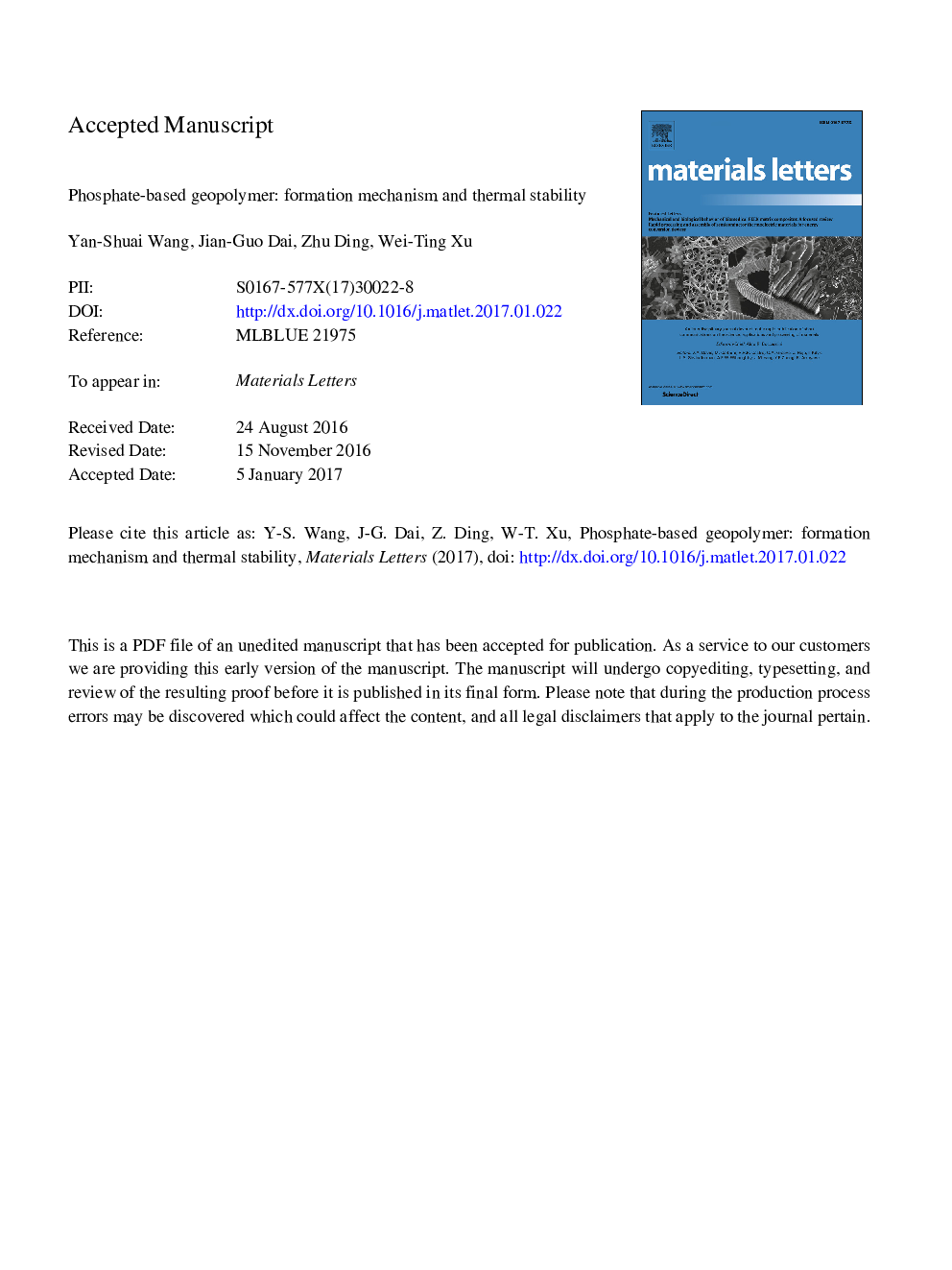| Article ID | Journal | Published Year | Pages | File Type |
|---|---|---|---|---|
| 5464210 | Materials Letters | 2017 | 11 Pages |
Abstract
Chemosynthetic phosphate-based geopolymer is a new type of low carbon and eco-friendly construction material. This article aims to investigate the formation mechanism and thermal stability of this new type of geopolymer. In this study, three mixes of the phosphate-based geopolymer were designed and synthesized at ambient temperature with different molar ratios of Si, Al and P, which were supplied by the raw materials of silica fume, metakaolin and monoaluminum phosphate. No accelerating setting condition (e.g., metal oxides addition or high temperature curing) was applied. The experimental results showed that the 28-day compressive strength of the hardened geopolymer paste arrived at about 31 MPa when the Al/P molar ratio is equal to 1.0, which was ensured by the formation of an amorphous structure of SiO2·Al2O3·P2O5·nH2O and a crystalline phase, aluminum hydrogen phosphate (AlH3(PO4)2·3H2O). At elevated temperatures, a phase transition of the phosphate-based geopolymer was activated from aluminum hydrogen phosphate to berlinite (AlPO4) and the silicon-containing phase was rearranged.
Related Topics
Physical Sciences and Engineering
Materials Science
Nanotechnology
Authors
Yan-Shuai Wang, Jian-Guo Dai, Zhu Ding, Wei-Ting Xu,
